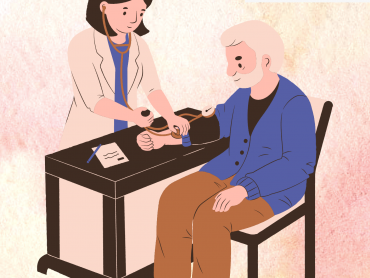“I am suing the cows and buffaloes of the world as all responsible for making and selling fatty foods.
A famous person I know died recently; a young man, talented, with very a bright future. It is heartbreaking that his end came so sudden. Doctors say it was a heart attack; they say he suffered from hypertension and hypercholesterolemia and was under treatment for the same. I say what about those who gave him high cholesterol and high blood pressure? Well, I say it’s a planned or a systematic conspiracy for murder!”
At this point, you would be confused if this article is written by a mental health doctor or a mental patient. You would argue that not everyone with high cholesterol and hypertension develops a heart attack and that those are merely risk factors, like many other including genetical susceptibility, obesity, smoking, alcohol, a sedentary lifestyle etc. You would insist that throwing the blame on dairy products and those who produce it is illogical and ridiculous. You would off course be completely right. Yet for various reasons, death due to suicide is not subjected to the same amount of introspection and logic. Someone taking his own life is a very difficult situation to understand. We try to make sense of it by finding the “bad guy”. We try to gain some control over what happened.
In this article, I am attempting to make sense of suicide and the multifactorial nature of its etiopathogenesis. I am also making a case that suicide is nothing more than an organ failure, just like failure of any organ of the body can ultimately lead to death, failure of the organ of the mind can lead to suicide (thoughts and actions are products of the mind).
Suicide and Mental Health
Years of research on suicide reveals that around 90-100 % of those who commit suicide have a pre-existing mental disorder– a majority have depression, be it biological unipolar depression or bipolar depression. A large number of them suffer from substance use disorder and others have schizophrenia, dementia, delirium.
Interesting research proves that your genetics have some role to play in making you more likely to attempt suicide. Studies have shown that in certain families, there is a much higher rate of suicide as compared to other families. Even if certain members of those families were removed from the socio-cultural environment of the family and given for adoption, they still had a higher rate of suicide than the families they were adopted by. This gives credence to the fact that suicide does have some biological component to it.
Are Depression and Suicide Related?

Image Source: Image by John Hain from Pixabay
Let us focus on depression for now and see how depression can biologically increase the risk of someone attempting suicide. You must have seen or heard of people who even when diagnosed with a terminal illness find a ray of hope, say that if it was not for the illness they would have never found true happiness or the meaning of life. This comes from the circuits and connections in our brains which helps us see and evaluate the good and bad of every event that has occurred.
Imaging studies have shown that in depression, this circuit is disturbed, and we evaluate every event has had only negative outcomes, even if realistically the chances of a positive favourable outcome completely outweigh the chances of a negative one. This biologically-caused disruption leads one to
truly believe that no matter what, all situations are hopeless and that ending one’s life is the only possible solution. Almost 80-85% of suicides are depressed, yet only 10-15% of all those who are depressed attempt suicide. This is because there are other risk factors involved.
Types of Suicide
The psycho-social risk factors involved in suicide were best studied by the French sociologist Durkheim. He studied suicide as the relationship between individuals and society and established that there are no societies in which suicide does not occur. Durkheim differentiated between four types of suicide, the first being egoistic suicide. It is viewed as stemming from an absence of social integration. It is committed by people who are outcast by society and are insufficiently integrated into social groups and societies. These types of individuals find themselves powerless in determining their own individual place in society and experience problems adjusting to other groups. They are given little or no social care. Suicide is therefore perceived as a solution to free themselves of the loneliness or excessive individuation.
The second is anomic suicide is viewed as disillusionment and disappointment where because of the lack of social regulation, a person goes through extreme changes in wealth. This type of suicide is most notable at times when society is rapidly changing leading to uncertainty.
Altruistic suicide is when individuals or a group are too close and intimate, and stems from being overly integrated into society. The society is so slowly connected they choose to sacrifice their own life in order to fulfil some obligation.
The final type of suicide is fatalistic suicide, a rare phenomenon in the real world. Fatalistic suicide occurs in social conditions where an individual experiences universal persecution resulting from excessive regulation. Slavery and persecution are examples of fatalistic suicide in which an individual may feel that they are destined by fate to be in such conditions and choose suicide as the only means to escape such conditions
Takeaway
The feeling of hopelessness, the thought of wanting to end one’s own life and the subsequent behaviour of killing oneself are extremely complex mental processes that occur at the background of genetic vulnerability, years of mental illness and interplay between many complex social factors. The stressor preceding the suicidal act is nothing more than a tipping point. Rather than pointing fingers lets all take collective responsibility to it and work towards preventing someone from taking his own life.









